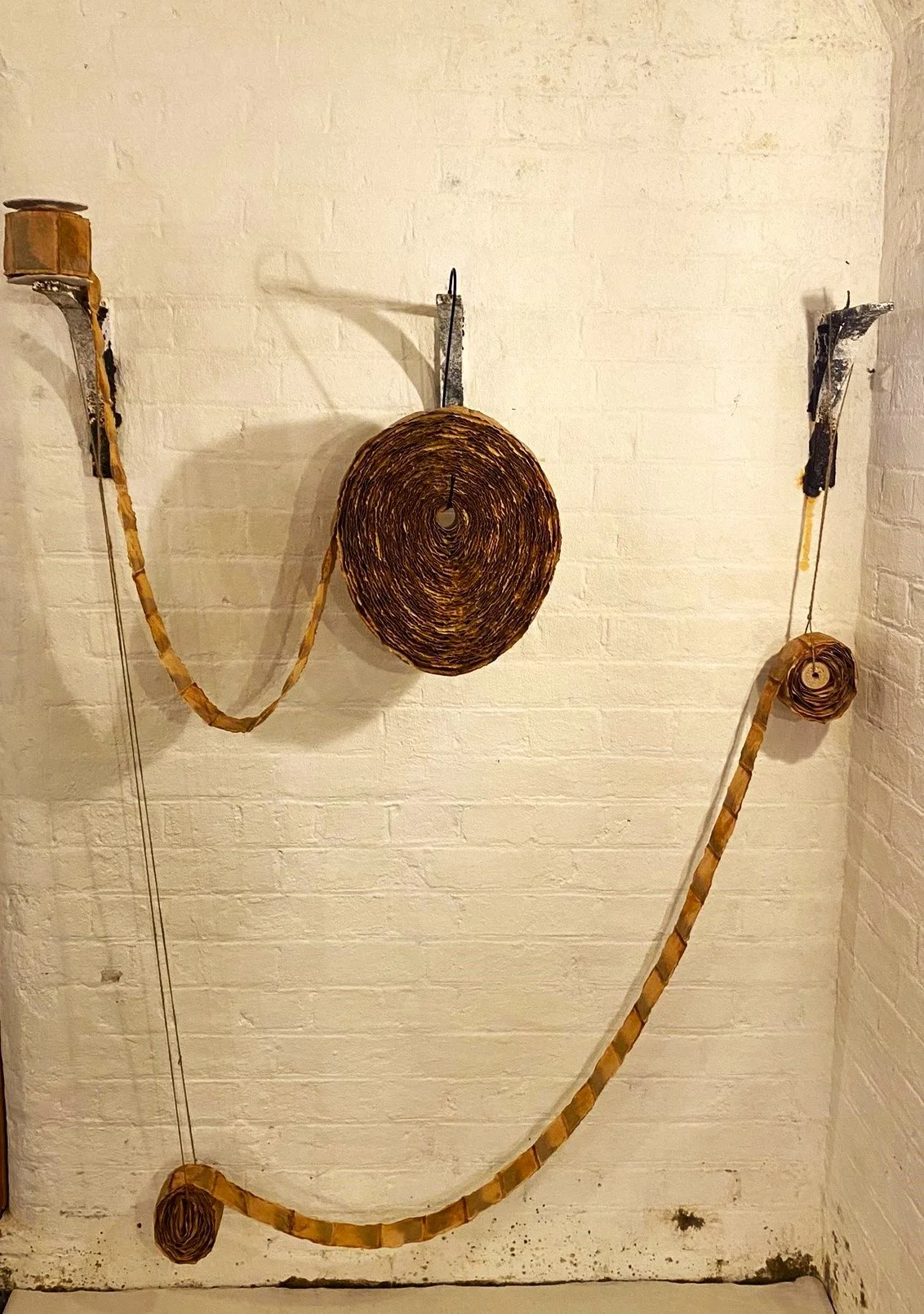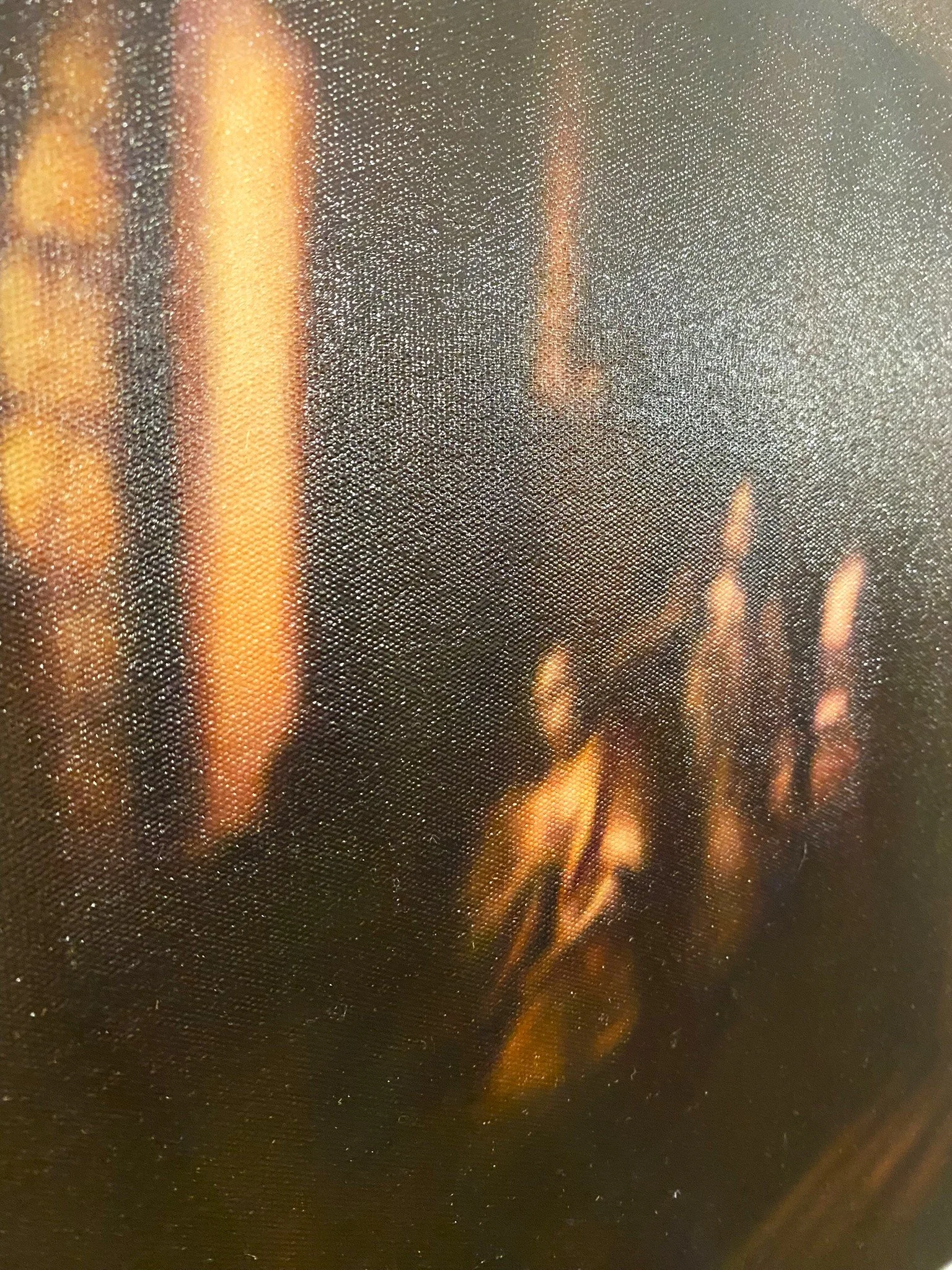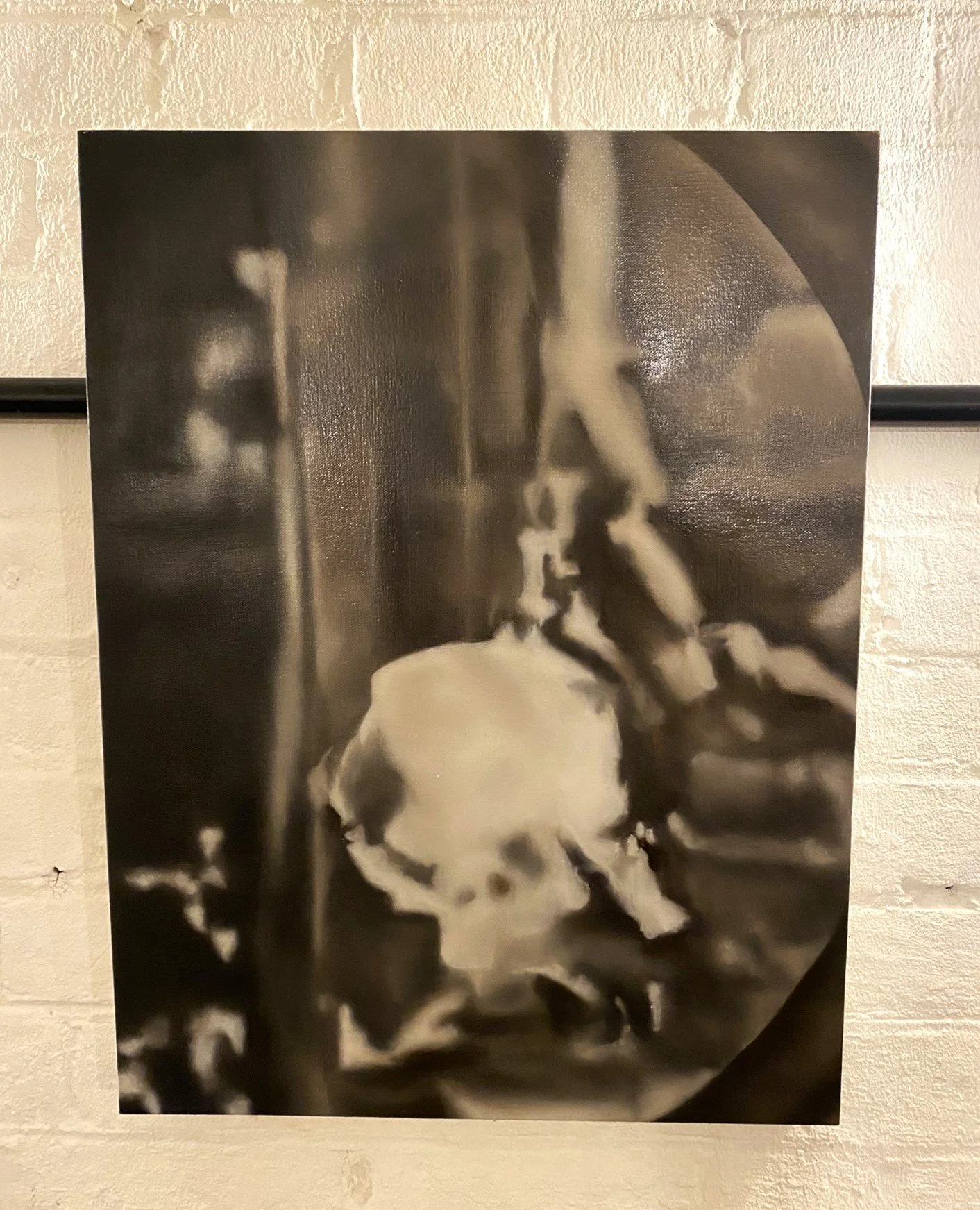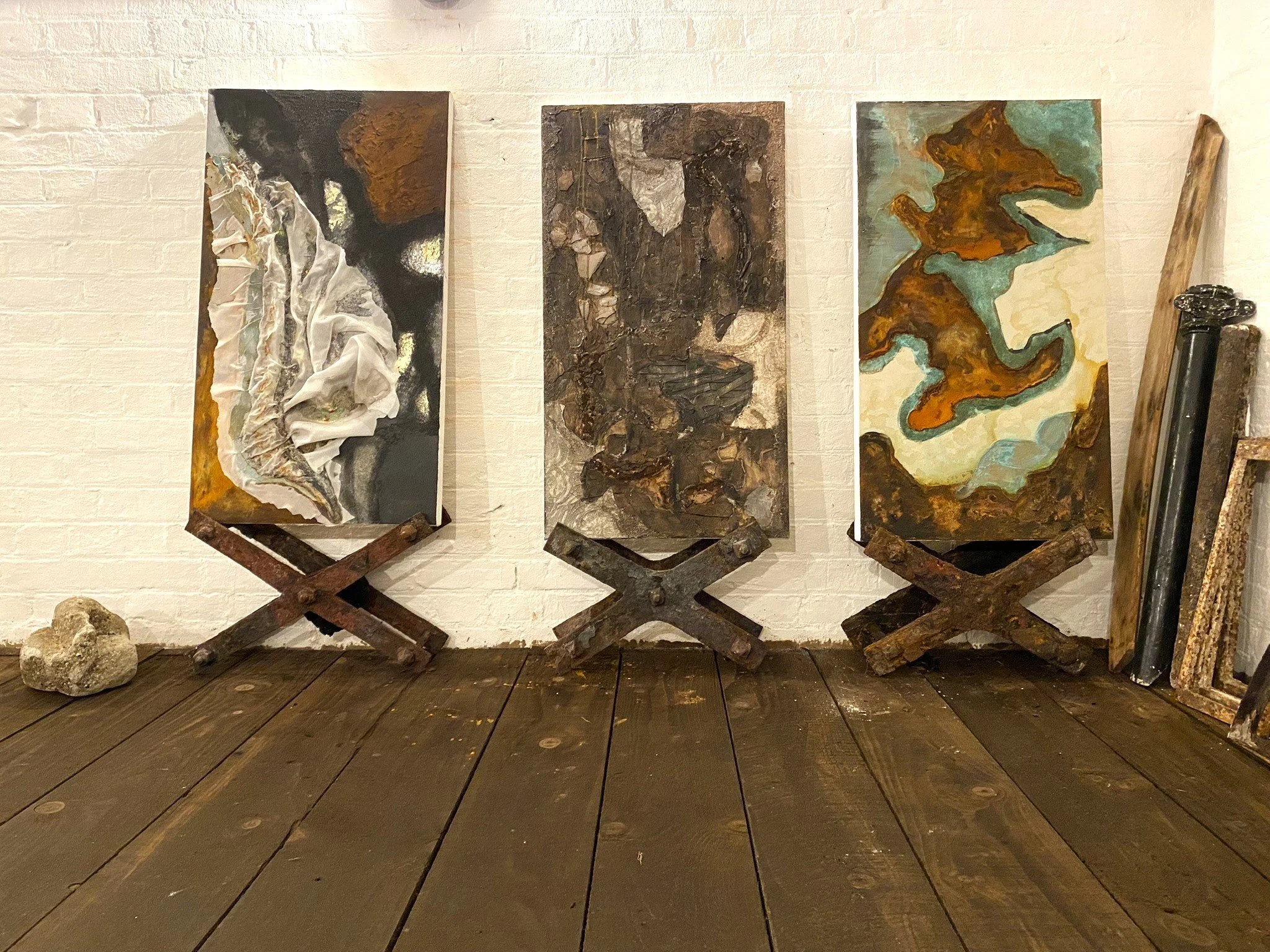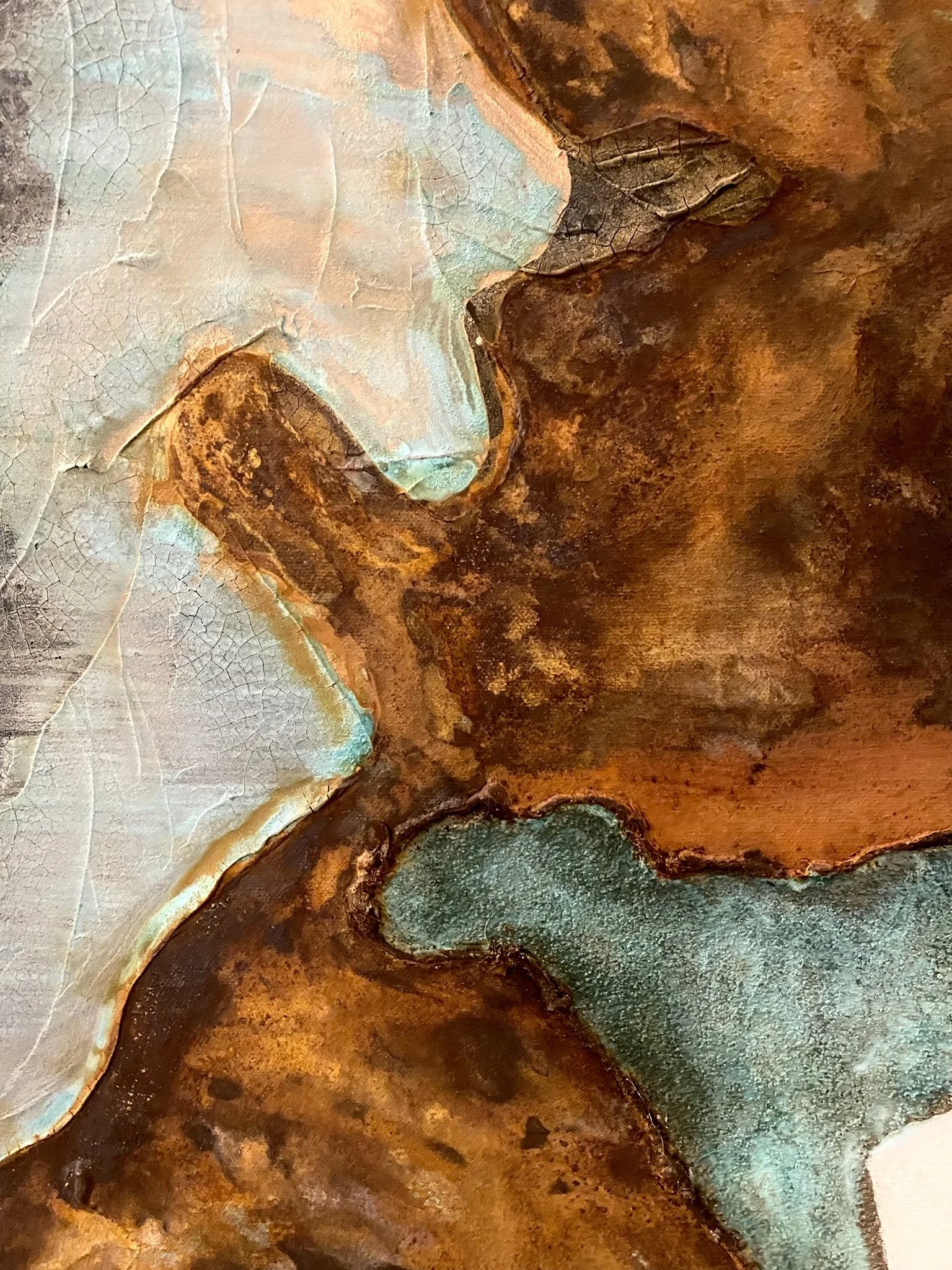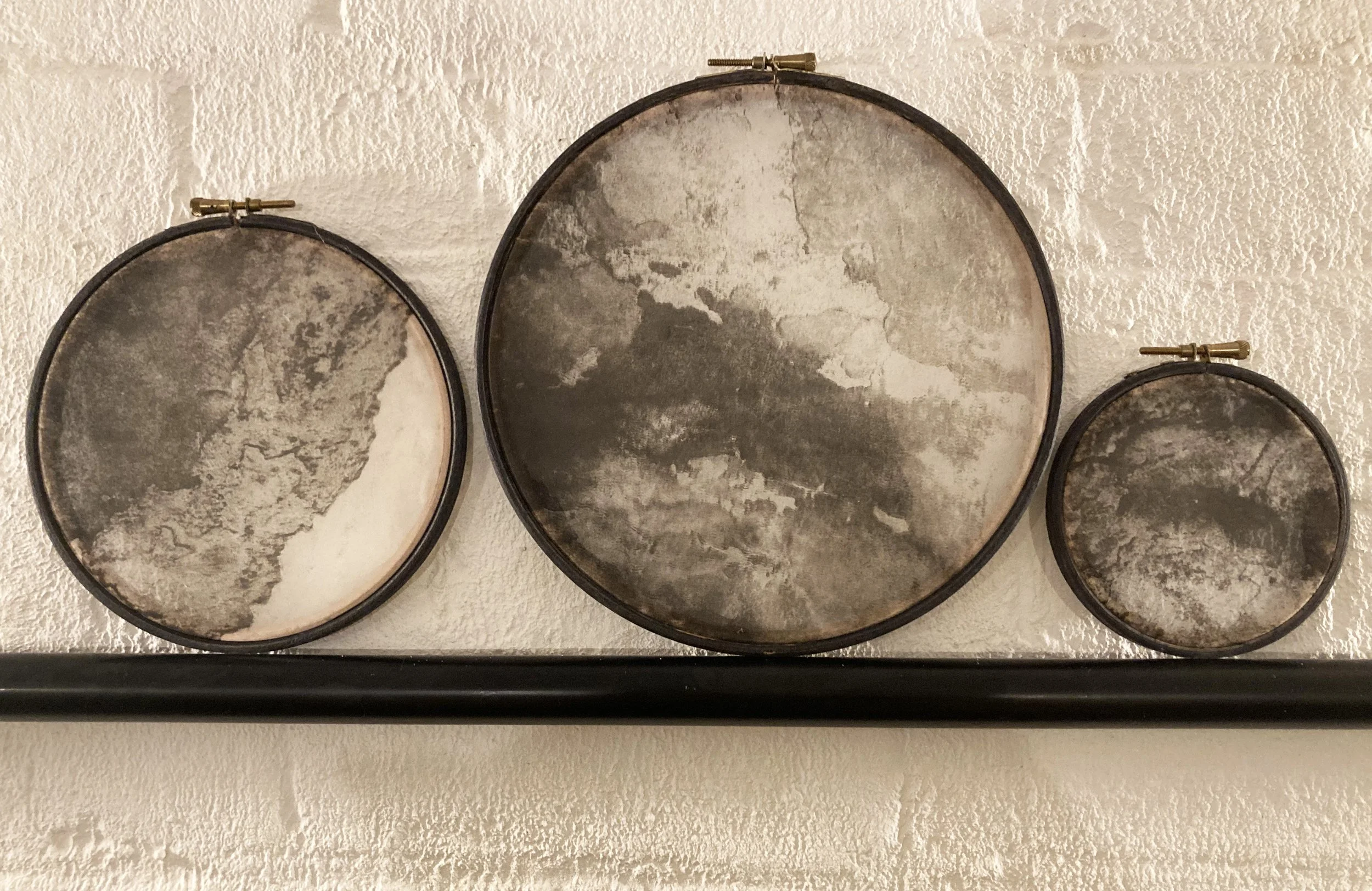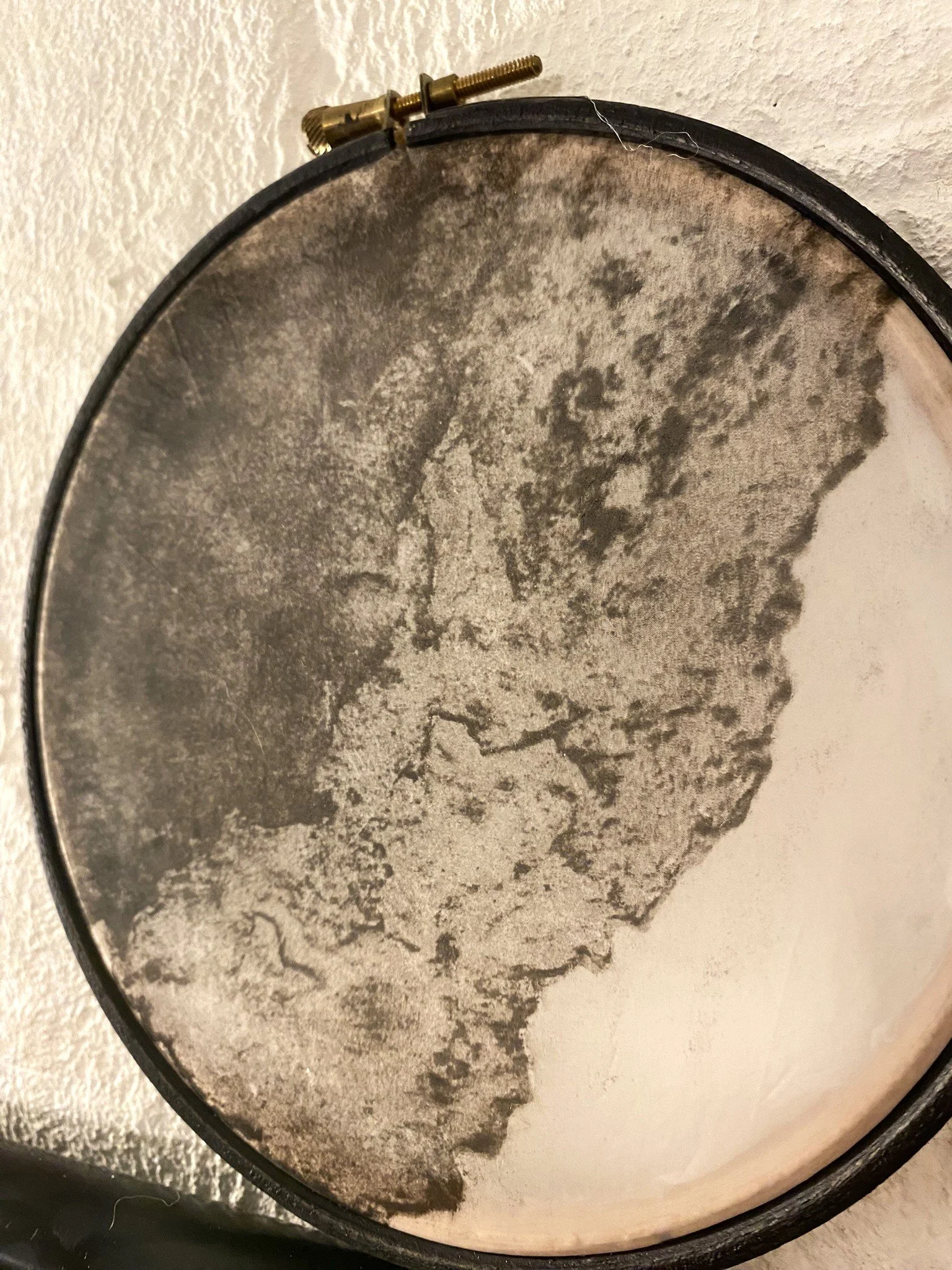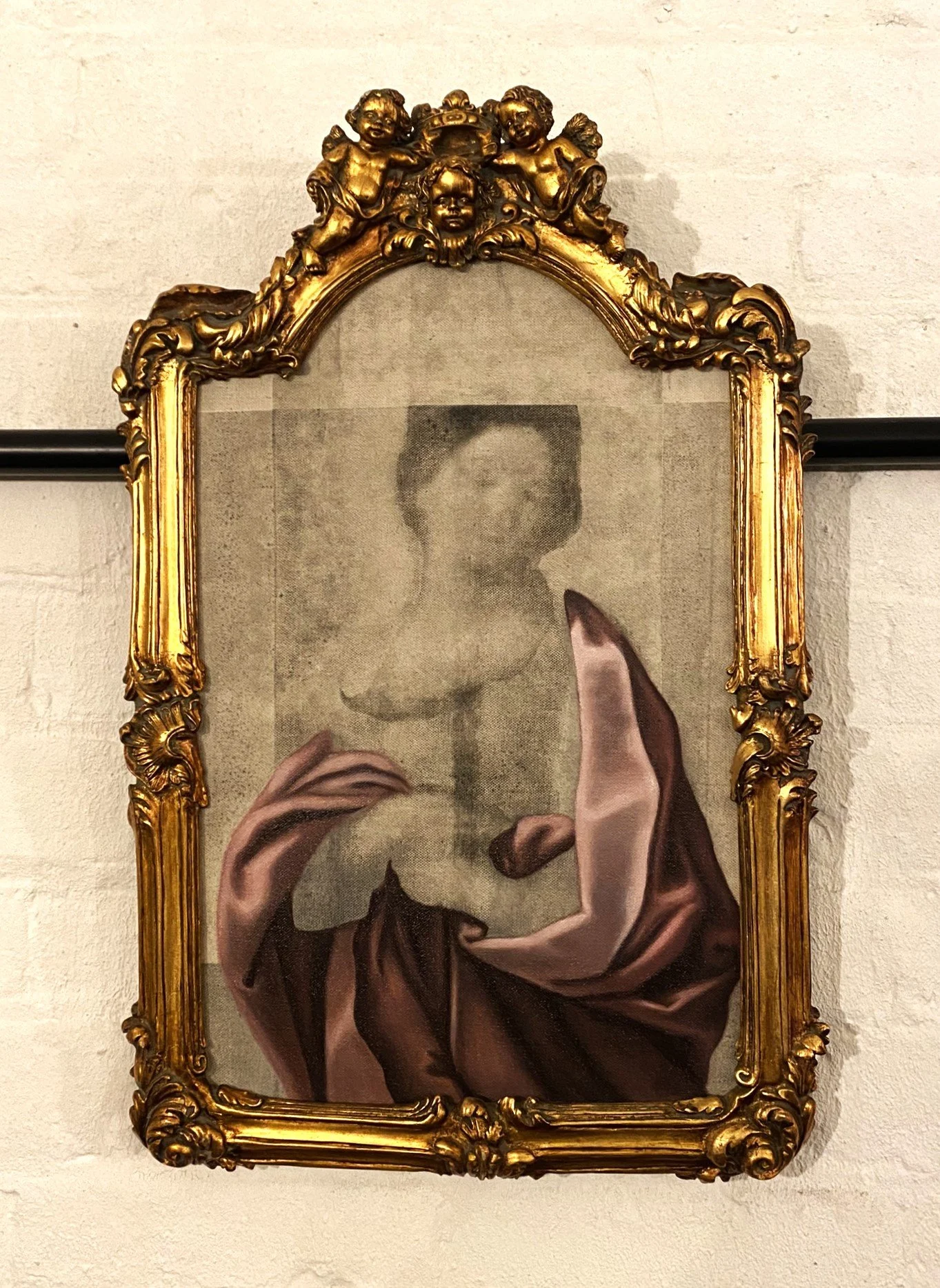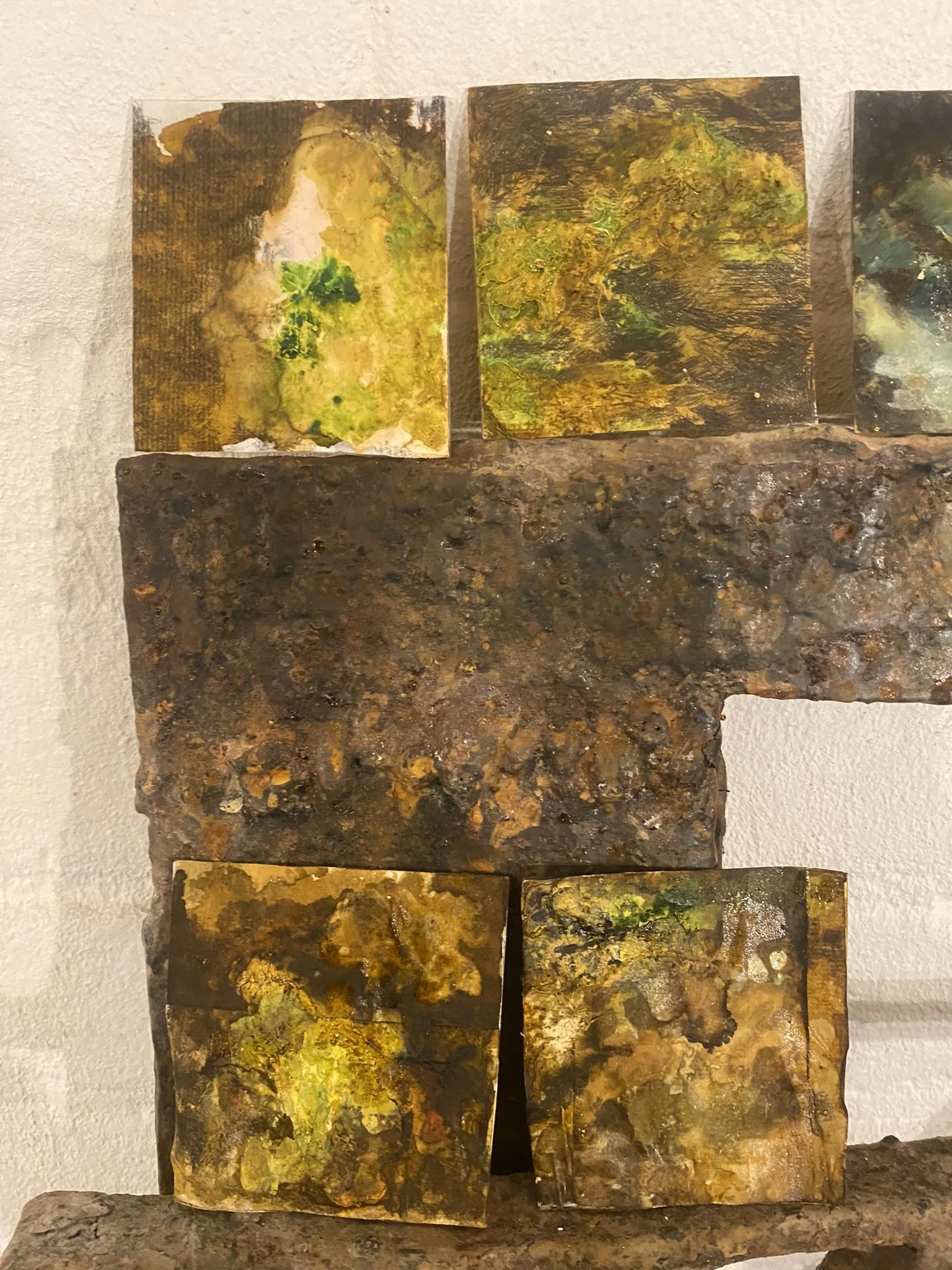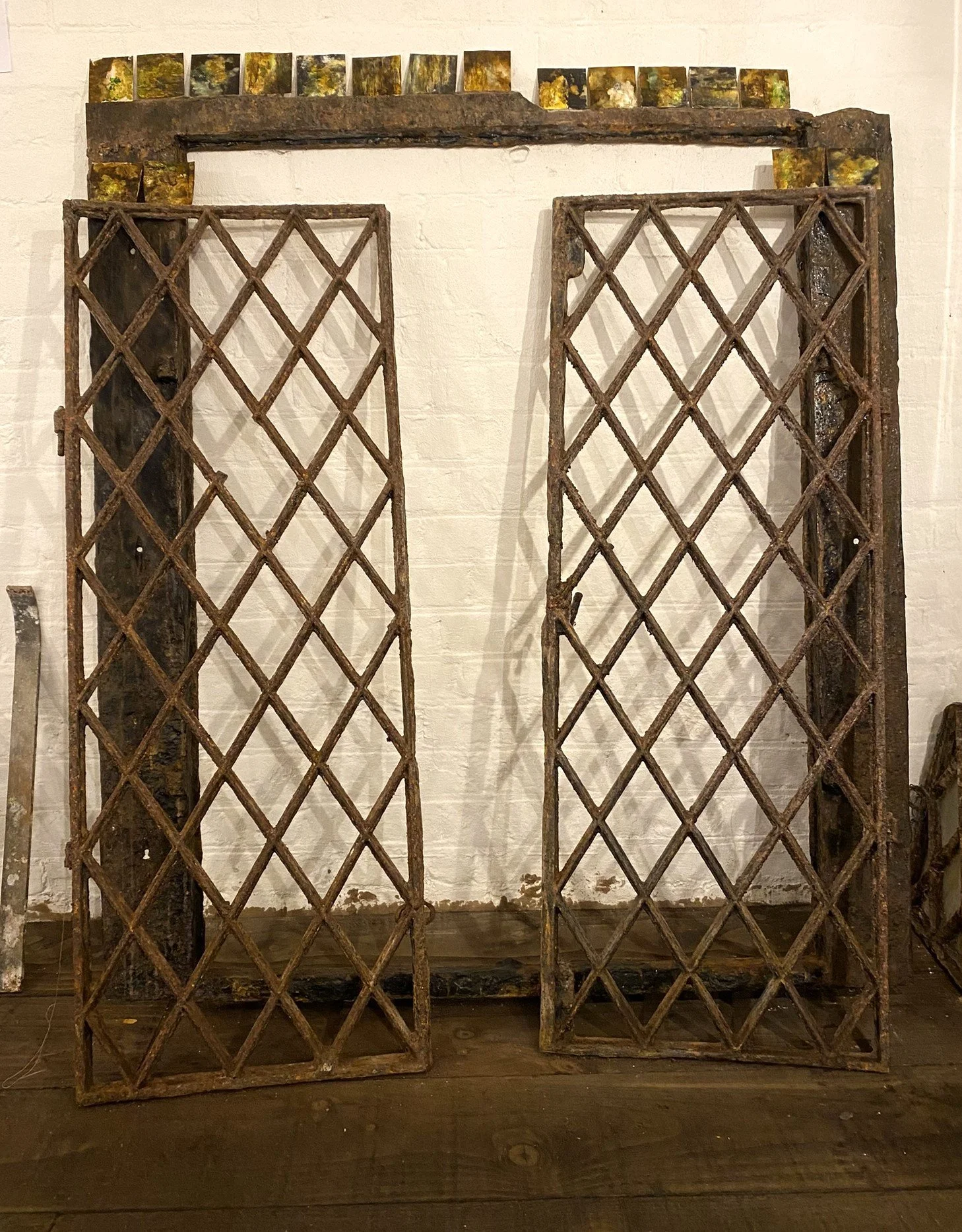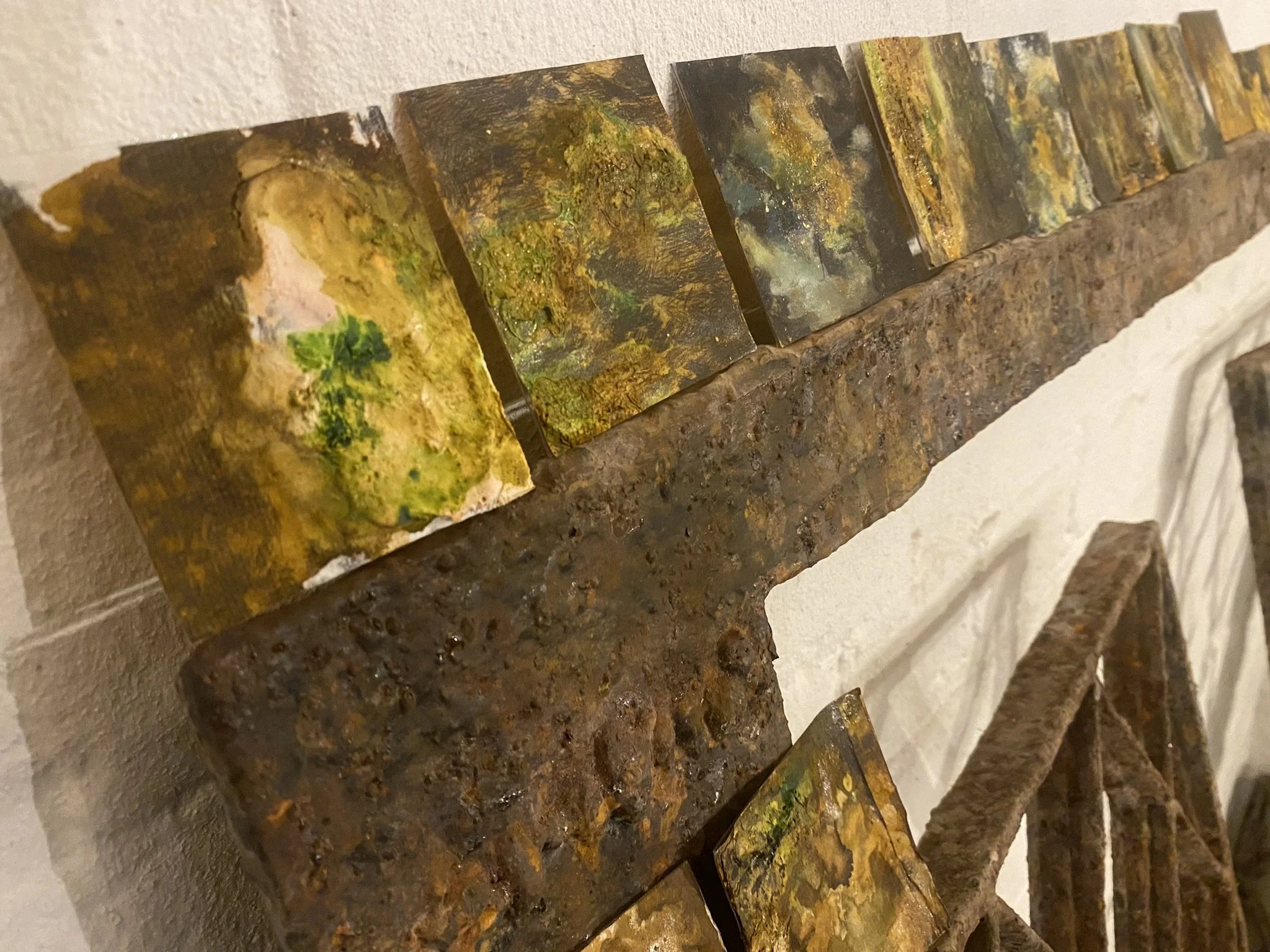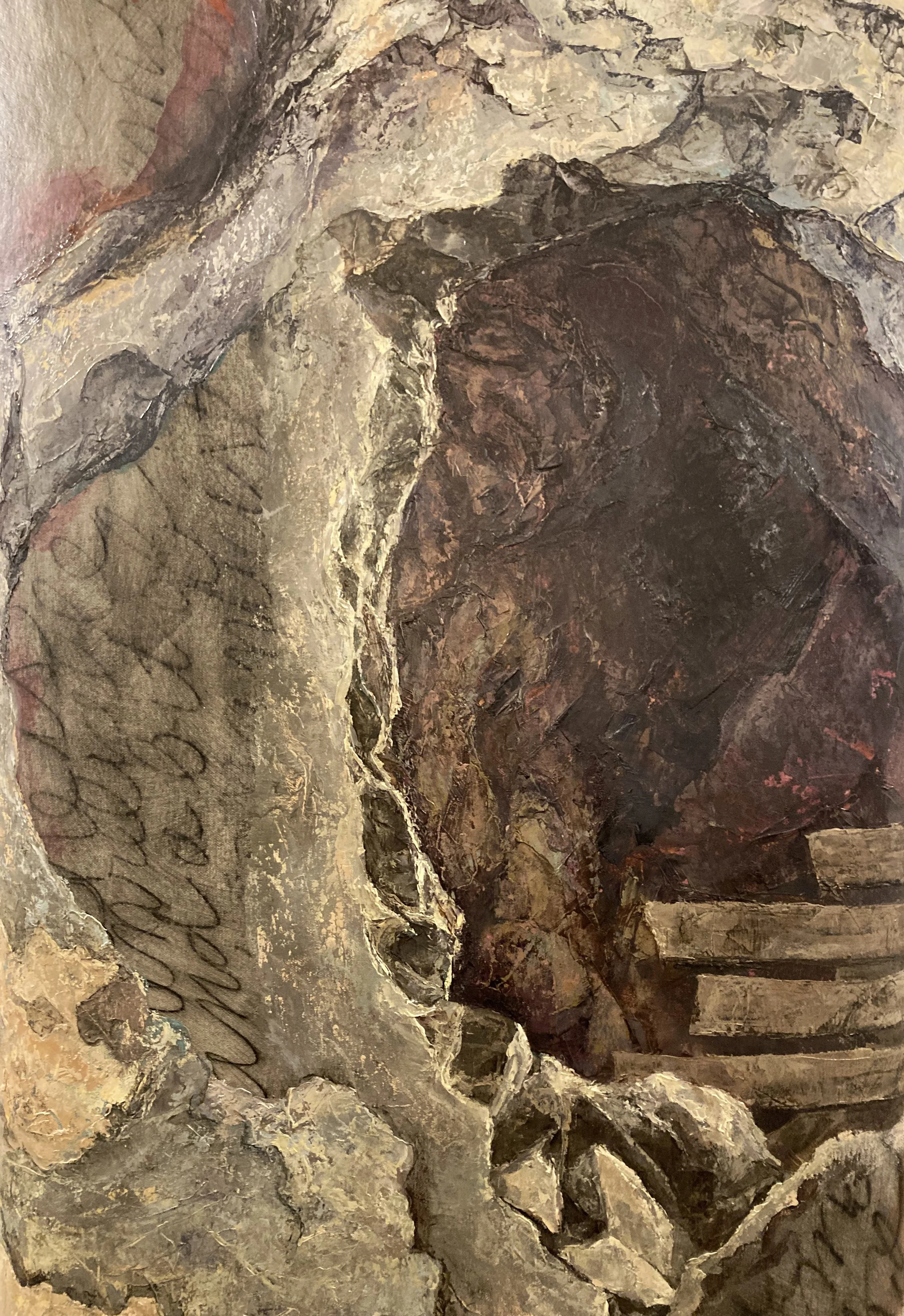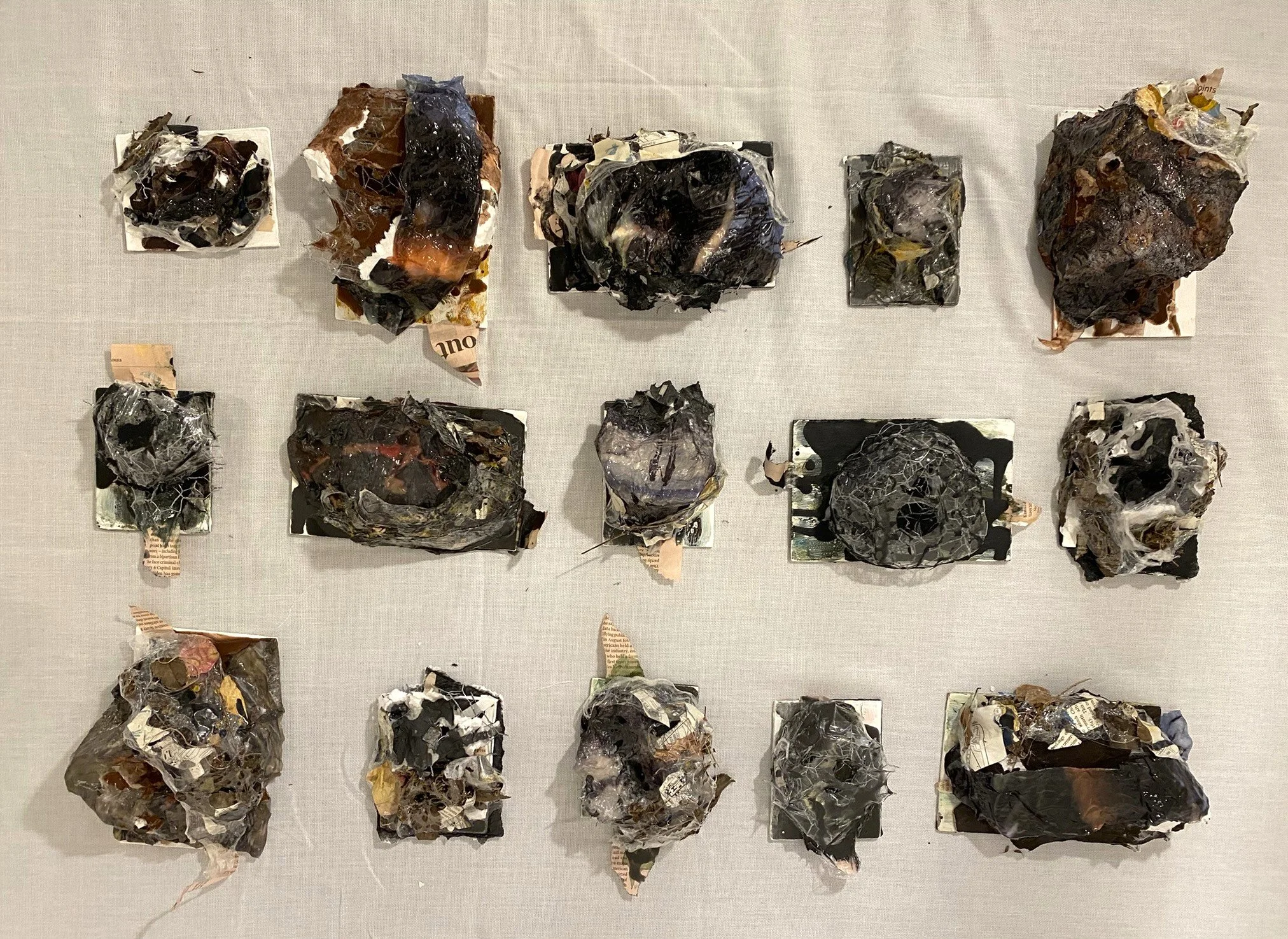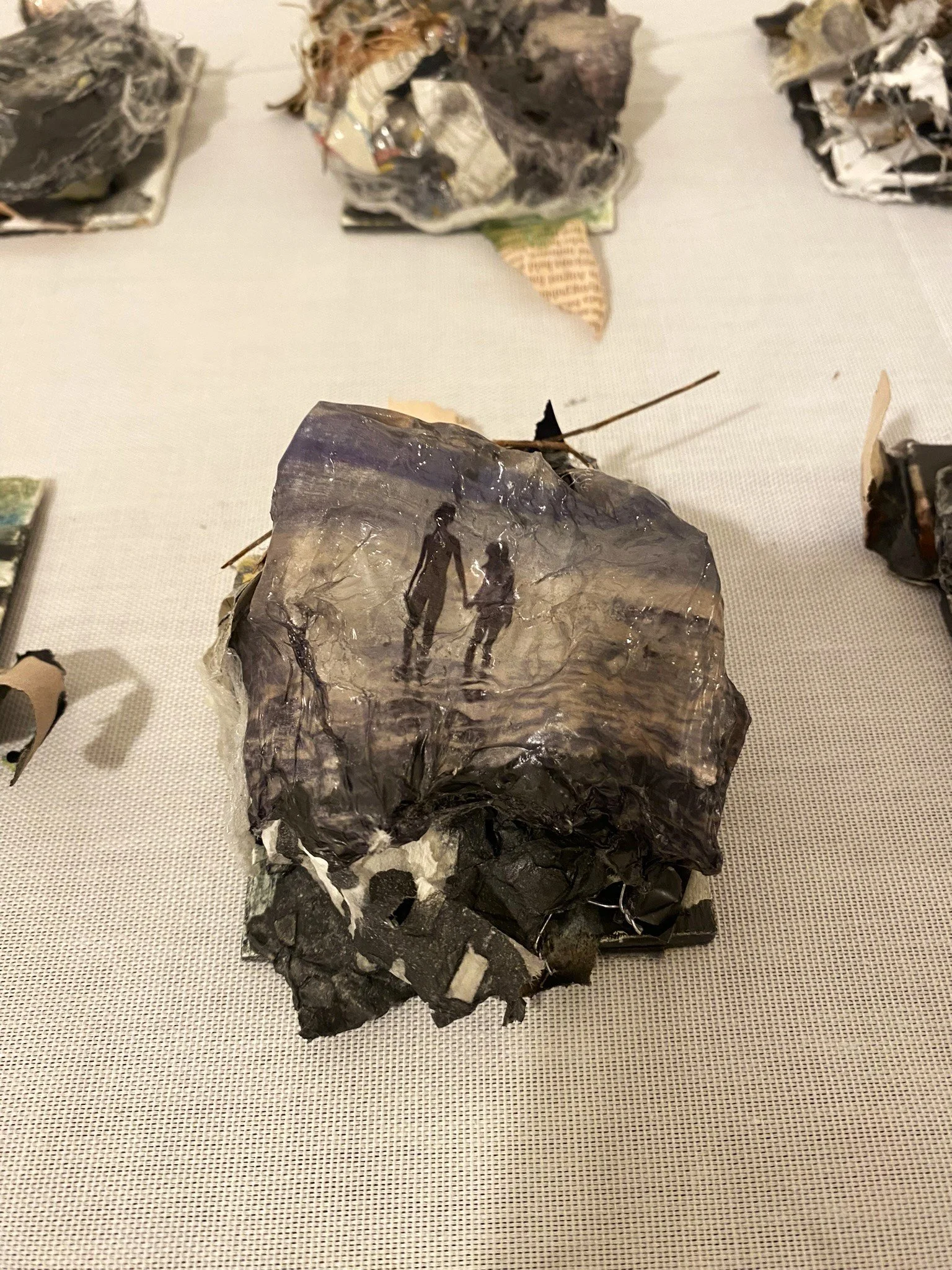St. Catherine’s Island, rich in its history and as an important heritage site both locally and internationally, encapsulates the process of time. Visualising the effects of both nature and human history, the fort highlights and conceptualises what can be learned from the remnants of history evident within the surface of its walls, marred by the natural process of decay.
With that in mind, artists Natasha Toms and Georgia Watkins carried out a brief artist residency in September 2023 over the course of 4 days. During this time, they explored the island and fort, seeking to understand its history, architecture and nature. From this, they involved 8 other artists to take part in a more extensive online residency.
From January - March 2023, the resident artists were given time to produce a new piece of work in response to the site. Provided with a curated ‘residency pack’, including images of selected areas of the island and fort, as well as information on its history and further resources, the artists found inspiration. Working within themes of art history or nature & landscape, they all took different approaches to the project, creating 8 equally unique yet poignant pieces to be displayed in this exhibition.
Whilst they each took on the styles of their own practice, the project prompted a wealth of conversations that resonated with all the works in the show. It drew out ideas of the relationship between the fort and the abundance of nature surrounding it and the ways in which the island is reclaiming its place. The theme of time also became a crucial motif, with artists capturing both the passage of time, and the places where we view moments of the fort’s history suspended in time.
View the residency pack here to see what inspired the artists.
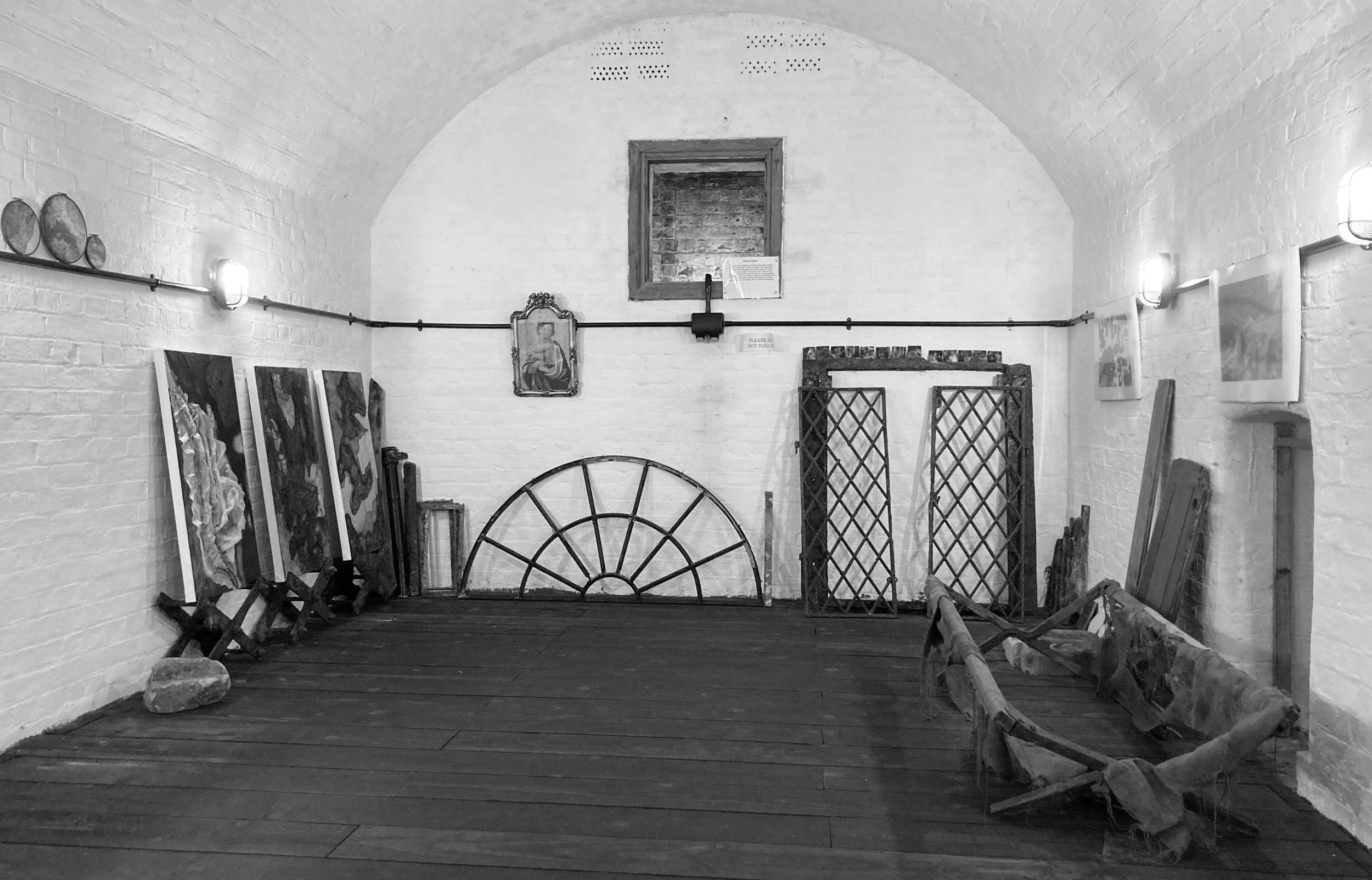
29thMarch - 1st April 2024
Sarah Watts
The Reassembled Everyday Landscape of Spent Time (2024)
Dried teabags, 180cm x 180cm x 120cm
On entry to the exhibition, Sarah Watts’ work, The Reassembled Everyday Landscape of Spent Time, is an intriguing representation of the surrounding environment. At first glance, the piece appears to resemble sepia toned film reels, beautifully draped from the fort’s fixings. On close inspection, you can see the work is comprised of hundreds of dried teabags, carefully married together and each suggesting a new view of the landscape outside. As the film strip moves, the landscapes change, much as the island does. Watts provides a moment of reflection for the viewer, in which to contemplate the cycles in which nature and our own lives operate. Within this, we are presented the idea that everything will return to its original state.
Watts' exploration of the medium of teabags began as an act of self care, in an investigation of ways to support mental health. The act of drinking tea and the interaction with friends through this is a mundane gesture that offers comfort and soothing. As the residency began, this work evolved to reveal themes of transience, both within the action of drinking tea and the nature and history of the fort.
Joseph Norris
Translation (2024)
Oil on canvas, 36cm x 28cm
This painting by Norris discusses prominent themes of art history and collections within the fort. Working a lot with his own images of artworks, the artist deciphers his own moments of departure throughout the process of visual rejuvenation. The act of using a representation of an artwork to create a third-hand account of it speaks to the art of interpretation; what we see here is an artist’s account of his experience with the piece, a very intimate moment.
Using traditional painting techniques and materials, Norris has developed a work that not only echoes the original Dutch still-life paintings that once sat in situ through the fort, but also that of his own analogue reference imagery. Through the distortion and ambiguity of the original artwork, we are reminded of the lost collection of artwork that was significant in the Windsor-Richards era of the fort’s history.
work shown: Joseph Norris & Jess Lewis
Jess Lewis
Equilibrium (2024)
Oil on canvas, 55cm x 42cm
As a resident artist for this project, Lewis found inspiration from the fort’s art auction catalogue. Working from an image she found depicting a mirror in the background, Lewis continued her exploration of the subject reflections. The mirror she depicts acts as a lens, through which we view a snapshot of the fort’s history; a window into the Windsor-Richard’s time.
With so many eras encapsulated in the fort’s history, the object of the mirror offers a way to suspend a moment in time, showing traces of what once was. The viewer is also given an insight into the life behind the intended lens.
Paula Le Baigue
Decayed Opulence (2024)
Mixed media on canvas
Le Baigue’s work is a celebration of the process of making. By allowing the materials to adopt their own natural processes, the artist takes a fun, creative approach to the piece. The range of materials used in these pieces include plaster and silk. With such materials, Le Baigue explores the contrast between the decay of the building and the lavish and extravagant parts of the site’s history.
Her series of paintings exhibited here show many different parts to the site and its history. The artist explores processes such as rust; conveying the idea of the sea’s erosion of the fort overtime. She also incorporates the material of plaster, which she layers on top of her paintings to then be smashed. This is reminiscent of the peeling walls seen in every room of the fort.
Georgia Watkins
Worlds Inside the Walls (2024)
Paper lithography on silk screen, 11cm x 11cm, 16cm x 16cm, 22cm x 22cm
Georgia Watkins, greatly inspired by the decaying walls of the fort, has explored the fort’s relationship with landscape. Every wall in the building appears to be crumbling due to its age and high levels of moisture. As they peel, they create beautiful textures and patterns something that Watkins has reimagined as ariel views of landscapes.
Making connections to previous bodies of work, she plays with the visual representation and interpretation of her subject. As you walk around the fort, you notice the paint is crumbling from the walls, revealing layers of history underneath. As the building decays, it becomes visually more and more interesting, creating a pattern through texture that, within itself, lies tiny little ‘landscapes’.
The ‘landscapes’ created by the walls are changing as the building decays, making references to the ever changing landscape of the island. These paper lithographs on silk screen highlight that which is beneath the peeling paint; they offer a new perspective on what the man made walls could be.
Natasha Toms
Catrin after Guido Reni (2024)
Paper lithography and oil on canvas, 55cm x 35cm
This piece by Toms was influenced by the fort’s art collection, in particular, the work of Guido Reni. The island was originally the site of a chapel dedicated to St Catherine. Using St Catherine as her source, Toms explores the history of the site through the combination of printmaking and oil painting.
The monochrome print underlay, created using slate from the beach, is reminiscent of the documentation of the art collection once housed in the fort; how it is remembered now. The bright, rich pinks on top contrast with the holy site and discuss the lavish, luxurious environment it was when it was used as a summer residence.
Pippa Smith
What the Elements Make (2024)
Etching and acrylic paint on shoji paper, 10cm x 10cm
Smith’s tiny etchings depict micro landscapes found along the walls of the island. Encapsulated by the rocky surface, Smith has honed in on the natural colours and textures to create these layered pictures. They are reminiscent of the curiosity felt when engaged with such objects; wondering what little ecosystems lie within the cracks.
The powerful colour and depth to these pieces demonstrates the strength of the nature around the fort, gradually reclaiming the building and returning to its original state.
Katy Lucas
The Cave Entity (2023)
Sculpture, 19cm x 20cm x 10cm
Waiting 20,000 Years For The Tide To Rise (2024) Archaeological Fragments Deserted By The Tide I (2024) Archaeological Fragments Deserted By The Tide II (2024)
Digital prints, 42cm x 59.4cm
The digital landscapes are constructed and mutated from a layered composition of photographs taken at underground sites. This composition is expanded using the AI Generative tool. The AI Generative tool takes the surrounding pixels of the small, selected area, replicating and representing the relevant visual information, including lighting, texture and colour without written prompts. This selection process deconstructs the original photographic composition into layers. The edges of each layer are then manually softened using the erasing tool and manually merged to create key composition aspects that Lucas later rearranges and reworks.
It's important to emphasise that the AI Generative Fill is used as a tool, the slow, laborious, and tedious process that happens outside the curiosity and anxiety of wandering through the underground. This technology, like the camera, satellite and ariel technology has been used as a tool to advance art and archaeological practices. This digital landscape is made up of 20,000 individually manually merged squares, artificially hybridizing what could be the underground architecture of St Catherine's Island.
Tara Kraft
She is Unreliable and a Bit of a Romanticist (2024)
Oil on canvas, 152.5cm x 54.5cm
This piece by Kraft depicts the decaying architecture that is prominent in the walls of the fort. Through the unveiling of the layers, she realises the reclaiming of the building by the wealth of nature surrounding it. As the plaster and wood falls apart, we are revealed the limestone rocks that form the foundation of the island.
Within the piece there is some cursive writing reading ‘she is reliable and a bit of a romanticist’, quoting an article in reference to Mrs Windsor Richards. Interestingly, Kraft took inspiration for this from the ‘plasterer’s squiggles’ seen on the walls of the fort. These are incredibly reminiscent of writing found beneath the paint of the fort’s walls that Kraft was unaware of.
Gillie Masters
Fragments Found on the Shore (2024)
Mixed media, 10cm x 7.5cm, 15cm x 10cm
In this piece, Masters explores the boundaries of material to investigate the relationship between the natural and the man-made. She reflects on the fort’s history, creating a treasure trove through which we can dig through the layers of its past. The resulting work is bound in the artist’s own past; heavily inspired by the memories she has of adventures spent on the beach looking for treasures as a child.
Both the process and outcome offer an opportunity for artist and viewer to look back through the different eras of the island and fort’s history, as well as reflect on their own memories.
Thank you to all the wonderful artists who made this exhibition so special. It has been incredible to celebrate St Catherine’s Island through your art.
Thank you to the hardworking staff of the island and to the visitors who made this show come to life.
Georgia & Natasha xx




